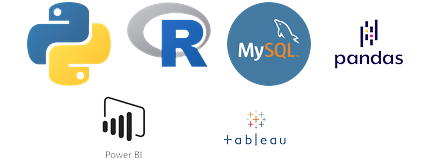Here’s a comprehensive syllabus for a course on Microsoft Power Query, structured to cater to beginners and intermediate users. The syllabus is divided into modules, each focusing on different aspects of Power Query, and includes topics, learning objectives, and practical exercises.
Module 1: Introduction to Power Query
Topics:
- Overview of Power Query
- Installation and setup (Excel and Power BI)
- Understanding the Power Query interface
- Basic concepts: Queries, Connections, and Data Sources
Learning Objectives:
- Understand the role and capabilities of Power Query
- Navigate the Power Query Editor
- Connect to various data sources
Practical Exercises:
- Install Power Query add-in (if using older Excel versions)
- Open Power Query Editor and explore its components
- Connect to a sample Excel workbook and load data
Module 2: Importing and Connecting Data
Topics:
- Data sources: Excel, CSV, Web, Databases, and Online Services
- Creating and managing connections
- Refreshing data
Learning Objectives:
- Connect to multiple data sources
- Manage and refresh data connections
Practical Exercises:
- Import data from an Excel file, a CSV file, and a web page
- Set up a connection to a SQL database (if available)
- Practice refreshing data connections
Module 3: Transforming Data
Topics:
- Data cleansing: Removing duplicates, filtering rows, replacing values
- Data transformation: Splitting columns, merging columns, pivoting and unpivoting data
- Working with dates and text functions
- Grouping and summarizing data
Learning Objectives:
- Perform basic and advanced data transformations
- Apply text and date transformations
Practical Exercises:
- Cleanse a dataset by removing duplicates and filtering rows
- Transform data by splitting and merging columns
- Pivot and unpivot a sample dataset
- Group data and calculate summaries
Module 4: Advanced Data Transformations
Topics:
- Custom columns and conditional columns
- Merging and appending queries
- Using parameters and custom functions
- Advanced date and time transformations
Learning Objectives:
- Create custom and conditional columns
- Merge and append datasets
- Utilize parameters and custom functions for dynamic data manipulation
Practical Exercises:
- Create a custom column based on a condition
- Merge two datasets and append another
- Create a parameter to filter data dynamically
- Write and apply a custom function
Module 5: Data Loading and Integration
Topics:
- Loading data to Excel and Power BI
- Data load settings and options
- Integrating Power Query with other tools (Power Pivot, Power BI)
Learning Objectives:
- Load transformed data into Excel or Power BI
- Understand and configure data load settings
- Integrate Power Query with Power Pivot and Power BI for advanced analytics
Practical Exercises:
- Load a transformed dataset into an Excel worksheet and a Power BI report
- Configure data load settings for performance optimization
- Use Power Query data in Power Pivot for creating a data model
Module 6: Automation and Best Practices
Topics:
- Automating data refreshes
- Best practices for efficient data transformation
- Troubleshooting and error handling
Learning Objectives:
- Set up automated data refresh schedules
- Apply best practices for managing and transforming data
- Identify and resolve common Power Query errors
Practical Exercises:
- Set up an automated refresh for a Power Query connection
- Apply best practices to optimize a complex query
- Troubleshoot and resolve common errors in a sample dataset
Module 7: Case Studies and Project Work
Topics:
- Real-world case studies
- End-to-end project: From data import to report creation
Learning Objectives:
- Apply Power Query skills to real-world scenarios
- Complete an end-to-end data transformation and reporting project
Practical Exercises:
- Work on case studies provided by the instructor
- Complete a capstone project involving data import, transformation, and loading into a reporting tool (Excel or Power BI)
Module 8: Review and Q&A
Topics:
- Review of key concepts and skills
- Q&A session for clearing doubts
- Feedback and course wrap-up
Learning Objectives:
- Reinforce learning through review and practice
- Address any remaining questions
- Gather feedback for course improvement
Practical Exercises:
- Participate in a review quiz covering all modules
- Engage in a Q&A session with the instructor
- Provide feedback on the course content and structure
This syllabus can be customized further based on the audience’s needs and the course duration. Each module can include additional readings, video tutorials, and supplementary materials to enhance learning.

